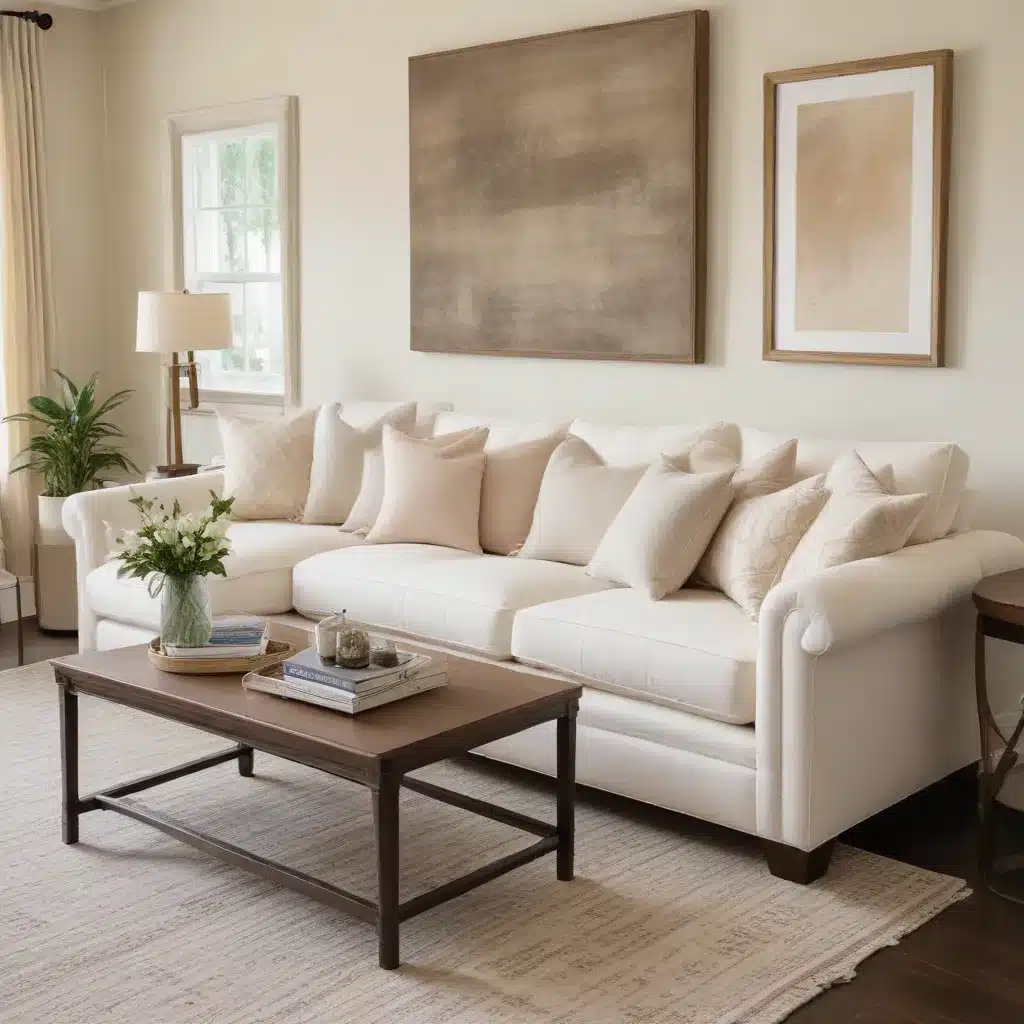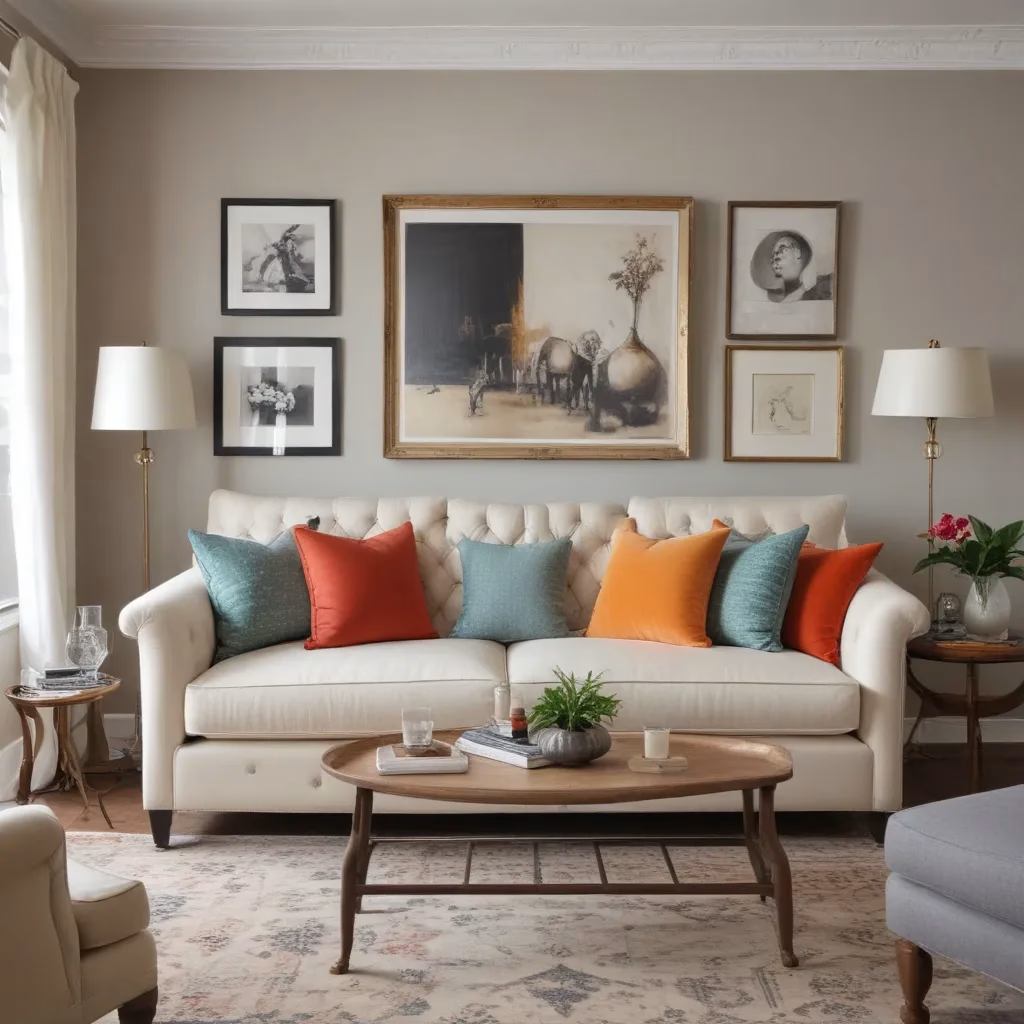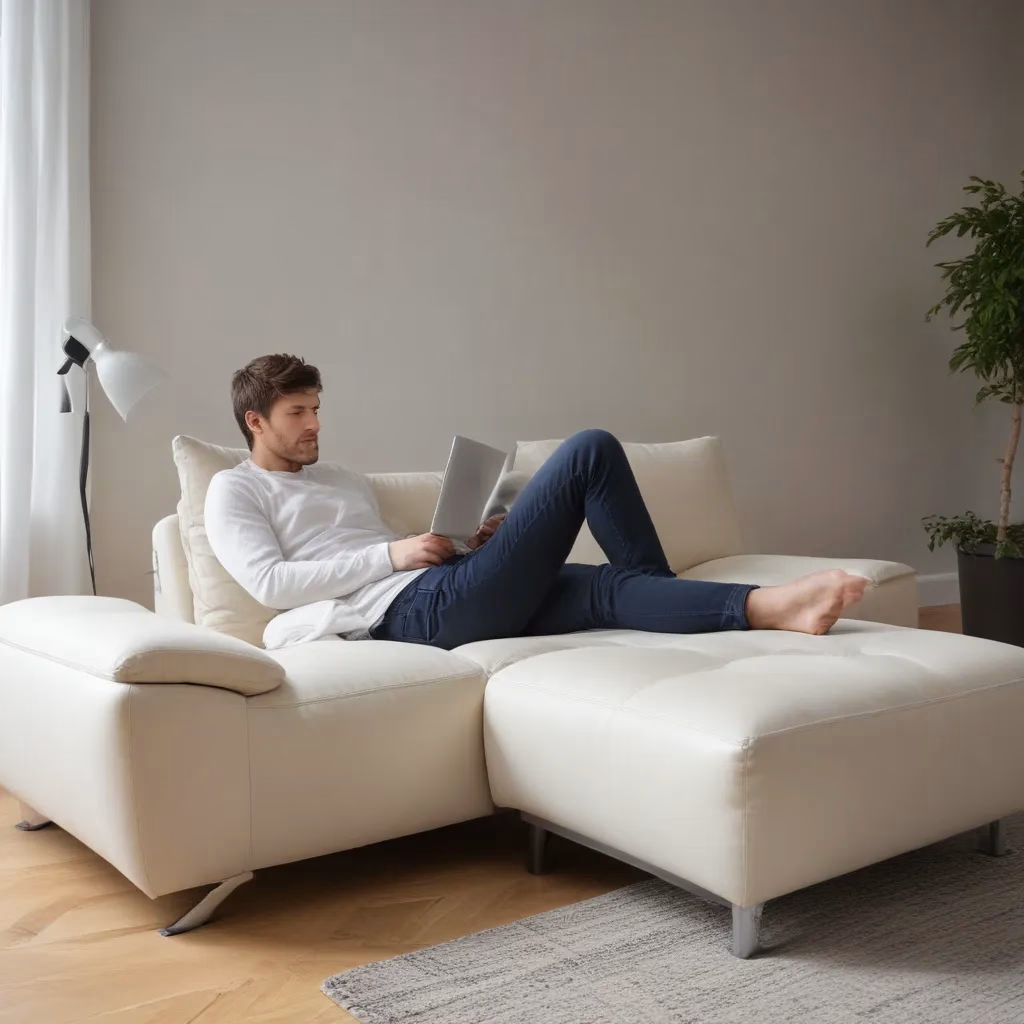
The Art of Sofa Transformation
As a furniture specialist with years of experience, I’ve seen firsthand how custom upholstery can breathe new life into a tired sofa. It’s not just about changing the fabric; it’s about reimagining the entire piece. When you opt for custom upholstery, you’re not just covering up worn material – you’re creating a bespoke centerpiece for your living space.
Custom upholstery allows you to tailor every aspect of your sofa to your specific needs and tastes. From the texture of the fabric to the density of the cushions, every element can be personalized. This level of customization ensures that your sofa not only looks stunning but also provides the perfect comfort level for you and your family.
One of the most exciting aspects of custom upholstery is the ability to choose from an vast array of fabrics. With thousands of options available, you can select materials that not only complement your decor but also stand up to your lifestyle. Whether you need kid-friendly, pet-resistant fabrics or luxurious textures for a formal living room, the choices are virtually limitless.
Selecting the Perfect Fabric
Choosing the right fabric for your sofa is crucial. It’s not just about aesthetics; durability and maintenance are equally important factors to consider. As someone who’s guided countless clients through this process, I can’t stress enough how vital it is to balance beauty with practicality.
When selecting a fabric, consider the room’s usage. For high-traffic areas, look for materials with a high rub count – this indicates how well the fabric withstands repeated use. Synthetic blends often offer excellent durability and stain resistance, making them ideal for family rooms or homes with pets.
For those seeking a more luxurious feel, natural fibers like cotton, linen, or wool can provide unparalleled comfort and elegance. However, keep in mind that these materials may require more careful maintenance. It’s all about finding the right balance for your lifestyle and aesthetic preferences.
Color and pattern are other crucial elements to consider. While bold patterns can make a statement, they may limit your ability to change your decor in the future. Neutral colors offer versatility, but don’t be afraid to inject some personality with vibrant hues or subtle textures.
The Upholstery Process Unveiled
The journey of reupholstering a sofa is fascinating, and as someone who’s overseen countless projects, I can attest to the craftsmanship involved. It begins with stripping the old fabric and assessing the frame and padding. This step is crucial as it allows us to address any structural issues that may have developed over time.
Next comes the rebuilding process. Fresh padding is added where needed, ensuring that your sofa not only looks new but feels new as well. The chosen fabric is then carefully cut and fitted to the sofa’s contours. This is where the skill of the upholsterer really shines – creating smooth lines and perfectly matched patterns requires both experience and artistic flair.
One aspect that often surprises my clients is the attention to detail in the finishing touches. The placement of welting, the alignment of patterns, and the precision of the stapling all contribute to the final look and quality of the piece. It’s these small details that distinguish a professionally upholstered sofa from an amateur job.
Customization Beyond Fabric
While fabric selection is a major part of custom upholstery, it’s not the only aspect you can personalize. Many of my clients are surprised to learn about the range of customization options available. For example, you can alter the firmness of your cushions to suit your comfort preferences. Some people prefer a softer, more relaxed feel, while others opt for firmer support.
Another area where customization can make a big difference is in the sofa’s arms and back. You might choose to add extra padding for increased comfort or adjust the height for better support. These seemingly small changes can significantly impact how you interact with your furniture daily.
Don’t forget about the legs of your sofa. Changing the style or finish of the legs can dramatically alter the overall look of the piece. It’s an often-overlooked detail that can tie your sofa into your room’s design seamlessly.
The Environmental Impact of Reupholstery
As a furniture specialist, I’ve become increasingly aware of the environmental implications of our industry. That’s why I’m a strong advocate for reupholstery as a sustainable alternative to buying new furniture. When you choose to reupholster, you’re essentially recycling the frame of your sofa, which significantly reduces waste.
Many of my clients are surprised to learn about the environmental benefits of reupholstery. By extending the life of your sofa, you’re reducing the demand for new furniture production, which often involves the use of new raw materials and energy-intensive manufacturing processes.
Furthermore, when you opt for reupholstery, you have the opportunity to choose eco-friendly fabrics. There are now many beautiful, durable options made from recycled materials or sustainable sources. It’s a wonderful way to refresh your living space while also being mindful of your environmental impact.
Maintenance Tips for Your Newly Upholstered Sofa
Once you’ve invested in custom upholstery, it’s essential to know how to care for it properly. As someone who’s seen sofas in all states of wear and tear, I can’t stress enough the importance of regular maintenance.
First and foremost, vacuum your sofa regularly. This simple step prevents dirt and dust from settling into the fabric fibers, which can lead to premature wear. Use the upholstery attachment on your vacuum cleaner for best results, and don’t forget to get into the crevices and under the cushions.
For spills, quick action is key. Blot (don’t rub!) the spill immediately with a clean, dry cloth. For tougher stains, consult the care instructions for your specific fabric. Different materials require different cleaning methods, and using the wrong technique can do more harm than good.
Rotating your cushions regularly is another tip I always share with my clients. This ensures even wear and helps maintain the shape and comfort of your sofa over time. It’s a simple habit that can significantly extend the life of your upholstery.
The Cost-Benefit Analysis of Custom Upholstery
One question I often get from clients is whether custom upholstery is worth the investment. While it’s true that reupholstering can sometimes cost as much as buying a new sofa, there are several factors to consider.
Firstly, if you have a high-quality sofa frame, reupholstering allows you to preserve that quality while updating the look. Many modern sofas simply can’t match the craftsmanship of older, well-built pieces. By reupholstering, you’re essentially getting a new sofa with the bones of a superior piece of furniture.
Secondly, custom upholstery offers a level of personalization that you simply can’t get with off-the-shelf furniture. You have control over every aspect of the design, ensuring that the final product is exactly what you want. This level of customization can be particularly valuable if you have specific needs or preferences that aren’t easily met by standard furniture offerings.
Lastly, there’s the sentimental value to consider. I’ve worked with many clients who have strong emotional attachments to their furniture – perhaps it’s a family heirloom or a piece with special memories. In these cases, reupholstery allows you to honor that history while giving the piece a fresh start.
Trends in Sofa Design and Upholstery
As someone who keeps a close eye on furniture trends, I can tell you that the world of sofa design is constantly evolving. One trend I’ve noticed gaining traction is the move towards more modular and flexible seating options. People are looking for sofas that can adapt to different needs and spaces.
In terms of upholstery, there’s been a shift towards more textured fabrics. Boucle, for instance, has become incredibly popular, offering both visual interest and a cozy feel. I’ve also seen an increased interest in performance fabrics – materials that are both beautiful and highly durable.
Color trends in upholstery tend to move more slowly than in other areas of interior design, but I’ve noticed a gradual shift towards warmer, more earthy tones. Greens and terracottas are becoming increasingly popular, perhaps reflecting a desire to bring more natural elements into our homes.
The Role of Technology in Modern Upholstery
It’s fascinating to see how technology has impacted the world of upholstery. From the development of more durable and stain-resistant fabrics to computer-aided design tools that allow for precise pattern matching, technology has truly revolutionized our industry.
One area where I’ve seen significant advancements is in the realm of 3D visualization. Many upholsterers now offer virtual tools that allow clients to see how different fabrics and designs will look on their sofa before making a decision. This technology has been a game-changer in helping clients feel confident about their choices.
Another exciting development is the rise of smart fabrics. These innovative materials can do everything from regulating temperature to resisting odors. While they’re still relatively new to the upholstery world, I’m excited to see how they’ll transform our sofas in the coming years.
Making the Decision: Reupholster or Replace?
As a furniture specialist, I’m often asked whether it’s better to reupholster an existing sofa or buy a new one. The answer, as with many things in life, is: it depends. There are several factors to consider when making this decision.
First, evaluate the quality of your current sofa’s frame. If it’s a well-constructed piece with a solid hardwood frame, it’s likely a good candidate for reupholstery. On the other hand, if the frame is showing signs of wear or is made from less durable materials, it might be time for a replacement.
Consider the comfort level of your current sofa as well. If the basic structure and cushioning still feel comfortable, reupholstery can give you the best of both worlds – familiar comfort with a fresh look. However, if you find yourself constantly adjusting to find a comfortable position, a new sofa might be the better choice.
Your budget is another important factor. While reupholstery can be a significant investment, it’s often less expensive than purchasing a new, high-quality sofa. However, if your current sofa is a lower-end piece, the cost of reupholstery might outweigh the value of the furniture.
The Future of Sofa Design and Upholstery
Looking ahead, I see some exciting developments on the horizon for sofa design and upholstery. Sustainability is becoming an increasingly important consideration, with more clients seeking out eco-friendly fabrics and materials. I expect to see continued innovation in this area, with new, environmentally conscious options hitting the market.
Multifunctionality is another trend that I believe will continue to grow. As living spaces become more compact, especially in urban areas, sofas that can serve multiple purposes – perhaps incorporating storage or converting into beds – will become more popular.
In terms of aesthetics, I predict a move towards more organic shapes and forms. The rigid, boxy sofas of the past are giving way to softer, more curved designs that feel inviting and comfortable.
As we wrap up this exploration of custom upholstery, I hope you’ve gained some valuable insights into the world of sofa transformation. Whether you’re considering reupholstering a beloved piece or simply curious about the process, remember that the right upholstery can do more than just change the look of your sofa – it can transform your entire living space.
For more information on sofa styles and trends, you might want to check out Sofa Spectacular. They offer a wealth of information and inspiration for anyone looking to update their living room furniture.



